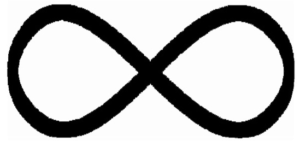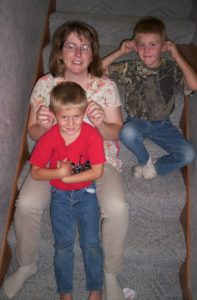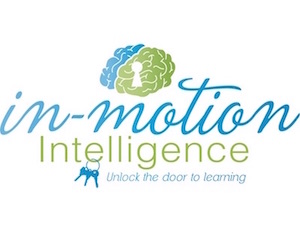Montessori
**To download and share this article, click here.
In the Absorbent Mind, Dr. Montessori said, “…it is clear that we must not carry the child about, but let him walk, and if his hand wishes to work we must provide him with things on which he can exercise an intelligent activity. His own actions are what take the little one along the road to independence”. (p. 155) Yet, today, how often do we withhold these freedoms as we passively transfer children from one carrier to another? And then we bemoan children’s dependence as they move through their early childhood years. “X doesn’t choose work.” “Y wanders.” “Z invades others’ space.” There is a direct relationship between the developmental movement patterns of an infant and later ability to focus, make choices, eye team, auditory process, and control one’s body. Consider this analogy to knitting: One is happily knitting and suddenly looks back to admire the product. There’s a hole! Awareness of a dropped stitch isn’t even visible until some time after it happens. Likewise with our developmental movement patterns—evidence of a “dropped stitch” may not appear until years later!
Before slouching in defeat, reflect on neuro-plasticity. Our minds are the most incredible processors ever. A hundred years ago Montessori talked of Sensitive Periods. Yes, there are optimal periods for development and forward progress can continue to be made after the ideal time. This is evidenced as we look at traumatic brain injuries, concussions, post-traumatic stress disorders, patients recovering from stroke, and of course children who master a skill after a sensitive period has come and gone.
Movement in a Montessori Environment
Movement is the common key for skill development. Some of us inherently move while studying. We eat popcorn, snap gum, click pens, tap toes, rock and/or bounce in our seats, etc. Oral processors—they’re the ones who appear to talk for the pleasure of hearing their own voices—benefit from facial and mouth movements. And then there are those who shut movement out in order to learn, such as the ones who close their eyes in order to listen.
Through observation of self and others, we know movement matters! Yet, how can we more intentionally integrate movement into our environments to anchor new learning as well as support those with “dropped stitches”? I suggest we merge movements and presentations in a seamless flow of preparing the body as preparation for the mind. Teach intentional movement in small groups. Consciously integrate movement into large group collectives.
Any of those times can become educational opportunities to let children know why a certain movement may be helpful. Utilize simple one-liners while moving. For example, “Moving the eyes side to side prepares them for reading.” “Relaxing the shoulders helps the hand get ready to trace the sandpaper letters.” These moments also provide opportunities to flex children’s self-observation muscles by inviting them to notice what a movement did for them. Was it energizing or relaxing? Where was it felt—shoulders, face, eyes, feet, head?
We have all experienced students who challenged us. Fear of failure or lack of experience handling such freedom and responsibility can leave some hesitant to choose work. Crashing head-on into others, tripping over feet, and dropping materials are everyday behaviors for some. It’s important to realize that organizing the physical system does not come naturally for everyone. Since we are individuals, there is not one solution for any one challenge. As in all Montessori work, show the children and then let them self-discover which movement concepts are most individually supportive.
Seeing
Consider all of the Montessori (and life) lessons that involve visual processing. Sandpaper letters is an obvious one. However, there are many sensorial works that also require the eyes (e.g. color tablets). In practical life, the eyes are used for pouring and to simply watch before doing. Even math involves visual processing. Support vision with eye-teaming pre-activities as warm-ups before a lesson. Simply invite children to track their eyes side-to-side as well as up and down. Later, build in descriptive language to the experience, such as, clockwise, counter clockwise, diagonal, horizontal, and vertical.
One of my favorite Brain Gym activities is the Lazy 8s.  Think of a number 8 that is flipped on its side—it is lazy! Our eyes live on our face in this very shape—an infinity 8 shape. Invite children to use the fingers of one hand to trace around their eyes to first give them a tactile impression of the shape. If teaching a group of children, next they will draw this shape either in the air or on a buddy’s back. If teaching individually, consider making a template for tracing with a finger, marker, paintbrush, etc. The key is to have the eyes follow the hand, building eye-hand coordination while also moving the eyes into all four quadrants (up, down, left and right, as well as straight ahead).
Think of a number 8 that is flipped on its side—it is lazy! Our eyes live on our face in this very shape—an infinity 8 shape. Invite children to use the fingers of one hand to trace around their eyes to first give them a tactile impression of the shape. If teaching a group of children, next they will draw this shape either in the air or on a buddy’s back. If teaching individually, consider making a template for tracing with a finger, marker, paintbrush, etc. The key is to have the eyes follow the hand, building eye-hand coordination while also moving the eyes into all four quadrants (up, down, left and right, as well as straight ahead).
Hearing
Auditory processing is an educational buzzword. In our environments, there are specific Montessori materials to support the physical skill of listening, such as sound cylinders and the bells. We further build on listening in the language area with storytelling, sandpaper letters, movable alphabet and the object boxes.  Vocabulary enrichment occurs throughout the environment. But how do we prepare the ears for this work? The Thinking Cap, from Brain Gym, is a simple activity that can be used at the onset of a collective or the start of an individual lesson. Simply hold the outer ear with the thumbs behind and fingers in front. Gently unroll the ears from top to bottom. Henry Remanlay, acupuncturist from Indonesia, invites us to hold the ears straight up for seven seconds before holding straight back for seven and then straight down for seven more. Each direction, notice any sensations inthe face, neck, and skull. Our ears are our auditory antennae and sometimes need assistance filtering at a “just right” level—easily distracted children often are not filtering sufficiently while others appear to filter too well, ignoring directions and guidance.
Vocabulary enrichment occurs throughout the environment. But how do we prepare the ears for this work? The Thinking Cap, from Brain Gym, is a simple activity that can be used at the onset of a collective or the start of an individual lesson. Simply hold the outer ear with the thumbs behind and fingers in front. Gently unroll the ears from top to bottom. Henry Remanlay, acupuncturist from Indonesia, invites us to hold the ears straight up for seven seconds before holding straight back for seven and then straight down for seven more. Each direction, notice any sensations inthe face, neck, and skull. Our ears are our auditory antennae and sometimes need assistance filtering at a “just right” level—easily distracted children often are not filtering sufficiently while others appear to filter too well, ignoring directions and guidance.
Focusing
I once had a student who regularly flopped out of his chair onto the floor where he would look around with an expression of, “Who just did that? How did I end up on the floor?” As I learned about the brain, reflexes, and trauma, I noticed this guy was a toe walker who always had hunched shoulders. It seemed his body was so tight that sometimes it just let go and he’d find himself on the floor for a reset.
Therapists talk about hyper and hypo-tonic muscles; both conditions can affect one’s ability to focus because the brain has to devote too much energy to the physiology. Many children are familiar with spaghetti, making it an appropriate analogy to our physiology. Muscles that are too tight are like uncooked spaghetti, rigid and lacking flexibility. On the contrary, over-cooked spaghetti doesn’t hold its shape well. It is mushy, much like a child with low muscle tone. Our brain can do its best thinking when the body’s musculature is “just right”. Invite children to begin noticing when they are too tight, too loose, and/or just right.
In the search for “just right,” teach large movements that lengthen/stretch the muscles along the entire back of the body. Those sitting at your collective can extend their legs in front to point their toes at a buddy across the circle and then flex their toes up at the ceiling. Pointing and flexing is part of the Foot Flex in Brain Gym. Invite children to reach their arms up to the ceiling and then down towards their toes to draw attention to their hips and back, which the Brain Gym program calls the Gravity Glider.
Conclusion
No matter what age level, I believe every environment benefits from a movement area or shelf. Offer activities for large and fine motor, as well as specifically building the visual and auditory skills. Go beyond “walking on the line”. Add yoga or other stretching cards. Create spinners or die, each focusing on a skill (Spinner for Eyes). Use song and dance freely! Beanbags, jump ropes, hopscotch, pendulum balls, balance and/or spooner boards all offer activities for those needing to move in ways separate from our traditional presentations. As we strive towards normalization and independence, we must remember that the higher level thinking lessons hinge on a balanced and developed physical system.
Resources
Brown, Kathy. (2015). “Tools and Resources” Retrieved from www.educateyourbrain.com (Lazy 8s templates, PACE poster, and when digging around the website, you’ll find relevant articles and more.)
Educational Kinesiology Foundation. (2015). www.braingym.org (The international website for the Brain Gym program.)
Goldade, Cindy. (2007, Summer) Tips, Tools, and Techniques for Sharing Brain Gym with the Very Young. Brain Gym Journal. Retrieved from www.braingym.org/archives
Hornbeak, Denise. “Store” Retrieved from www.denisehornbeak.com (Wooden version of Lazy 8s.)
Montessori, Maria. (1964 ). The Absorbent Mind. Wheaton, IL: Theosophical Press.
Remanlay, Henry. (2011). Remanlay Acureflex Integration and the Thinking Cap. Brain Gym Global Observer. Retrieved from www.braingym.org/archives (Scroll down to Global Observer January 2011 to download publication with article.)
About the Author
Cindy Goldade teaches for the University of Wisconsin-River Falls Montessori Graduate Program. An international presenter, she facilitates courses, in-services, and consultations on the Brain Gym program and related movement based learning techniques. In addition, homeschooling her three middle and high school aged children keeps her joyfully on the road of lifelong learning!





